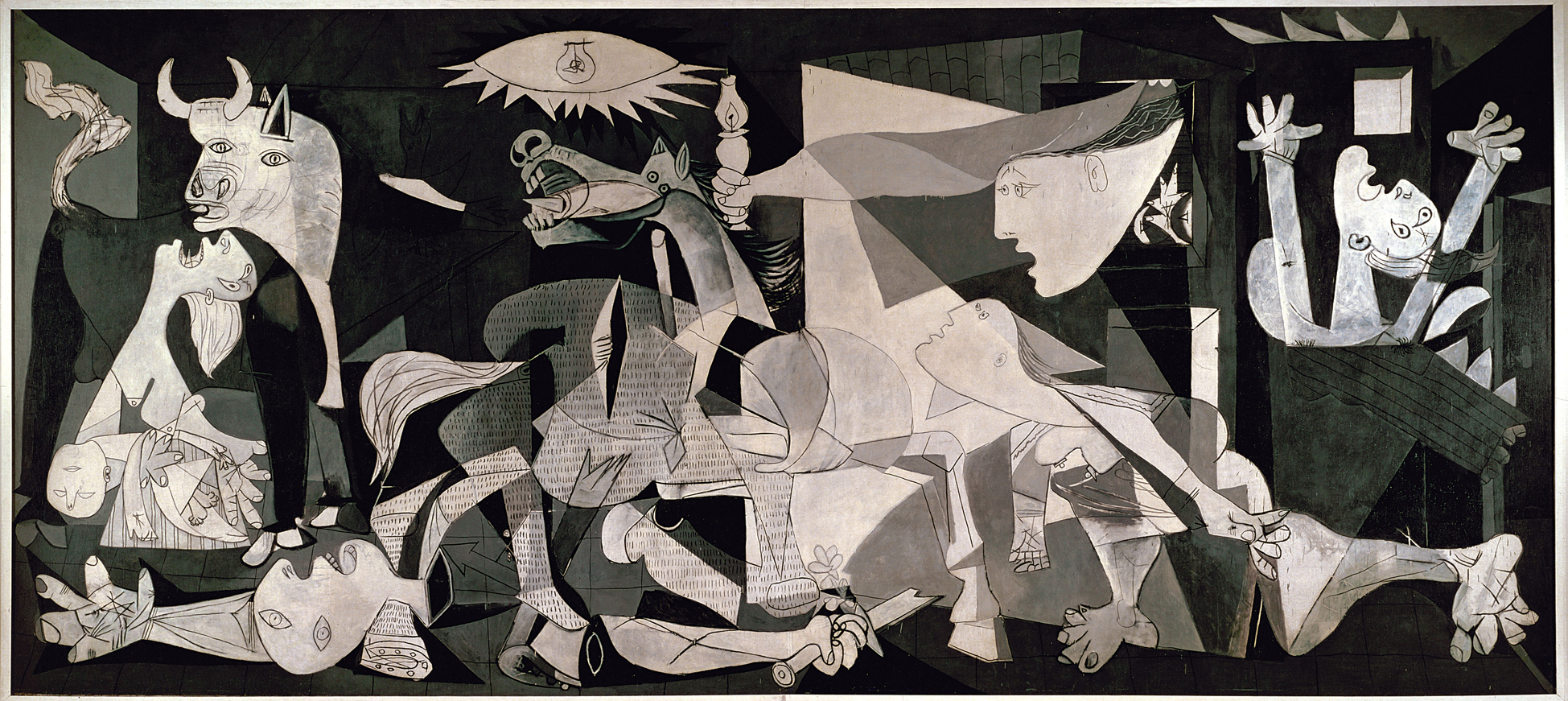Picasso's Guernica shows the tragedies of war and the suffering it inflicts upon individuals, particularly innocent civilians. It remains a reminder of the tragedies of war, an anti-war symbol, and an embodiment of peace. Interestingly, it was painted in Paris, and not to be brought to Spain until liberty and democracy had been reestablished in the country. I thought it'd be interesting to share some the metaphors throughout the painting. I was lucky to see this painting in 2009, and I remember being absolutely fascinated as the tour guide explained to us the same list I'm sharing now.
- The overall scene is within a room where, at an open end on the left, a wide-eyed bull stands over a woman grieving over a dead child in her arms.
- The centre is occupied by a horse falling in agony as it had just been run through by a spear or javelin. The large gaping wound in the horse's side is a major focus of the painting.
- Two "hidden" images formed by the horse appear in Guernica:
- A human skull overlays the horse's body.
- A bull appears to gore the horse from underneath. The bull's head is formed mainly by the horse's entire front leg which has the knee on the ground. The leg's knee cap forms the head's nose. A horn appears within the horse's breast.
- The bull's tail forms the image of a flame with smoke rising from it, seemingly appearing in a window created by the lighter shade of gray surrounding it.
- Under the horse is a dead, apparently dismembered soldier; his hand on a severed arm still grasps a shattered sword from which a flower grows.
- On the open palm of the dead soldier is a stigma, a symbol of martyrdom derived from the stigmata of Christ.
- A light bulb blazes in the shape of an evil eye over the suffering horse's head (the bare bulb of the torturer's cell). Picasso's intended symbolism in regards to this object is related to the Spanish word for lightbulb; "bombilla", which is similar to the word "bomba" for bomb in Spanish.
- To the upper right of the horse, a frightened female figure, who seems to be witnessing the scenes before her, appears to have floated into the room through a window. Her arm, also floating in, carries a flame-lit lamp. The lamp is positioned very close to the bulb, and is a symbol of hope, clashing with the lightbulb.
- From the right, an awe-struck woman staggers towards the center below the floating female figure. She looks up blankly into the blazing light bulb.
- Daggers that suggest screaming replace the tongues of the bull, grieving woman, and horse.
- A dove, holding an olive branch is scribed on the wall behind the bull. Part of its body comprises a crack in the wall through which bright light (hope, or the outside world) can be seen.
- On the far right, a figure with arms raised in terror is entrapped by fire from above and below.
- The right hand of the man suggests the shape of an airplane.
- A dark wall with an open door defines the right end of the mural.



No comments:
Post a Comment